Who will buy the coins. What coins does Sberbank of Russia accept
Not many people are now wondering what lies in their piggy banks or in their wallets. Not all the funds that are in our pockets represent specifically the value for which they are issued. Many coins are sold much more expensive than their own regular prices, but not everyone knows about it.
Now we will tell you more precisely about the different coins and their prices and about which coins Sberbank perceives. And, of course, we will answer one of the most basic questions: where to sell them or who buys them? Apart from dark markets and personal collectors, Sberbank is engaged in buying.
One of the minuses of buying by Sberbank will be that the purchase takes place in a limited period of time, which does not have a clear schedule, it can be weeks or months.
Prices offered by Sberbank rarely exceed 5,000 rubles. Yes, and this is a large sum for funds with a face value of, for example, 5 kopecks. It is problematic to say more precisely about the purchase of coins by Sberbank of Russia today, because the open information does not say about these "shares", but you will have to contact the central branch of the bank for details. Now there is no clear list of which coins Sberbank buys, because the price and uniqueness of these funds change every day. We offer you a rough list.
Distinction and value of a coin of 5 cents
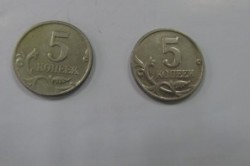
- 5 kopecks in 2002 - snow-white, iron (attracted by a magnet), size 18.5 mm, weight 3 g, protruding piping on the disk, depicting Gregory the Victorious on a stallion, symbol of the Moscow Mint (MMD). Sberbank of Russia buys for 5 rubles. Apart from MMD, a batch was issued by the St. Petersburg Mint (SPMD). Differences from the metropolitan product are that on the letter O and on the bottom sheet there is no edging, and the cloak of the rider has transverse folds. Such coins are a little more expensive.
- 5 kopecks 2003 - has a silver color, but otherwise does not differ from its own brothers in 2002. Handing over such a coin at Sberbank can be for 3 rubles. SPMD funds with the above differences can be sold at a cost of 5 rubles if they are in good condition.
Ruble coins and their differences

- 1 ruble in 2001 - silver, with a copper-nickel alloy (brass), 27 mm across, weight 7.5 g, with engraving of the two-headed falcon and protruding edging on the sides. Symbol MMD. It is possible to sell this coin in the normal state at a bank branch for 30,000 rubles. This ruble is very rare, its value is one of the largest today. This coin was not officially issued, and for this reason its value is much higher than other denominations that were issued in different years. Also this year anniversary rubles were issued. The jubilee ruble, dedicated to the 10th anniversary of the CIS, has a silver color, made of brass, issued SPMD, weighing 3.5 g and a size of 20.5 mm. Buy his bank can from 10 to 50 p.
- The ruble of the 2001 Reddish Book series has 3 types of drawings: West Siberian beaver, Sakhalin sturgeon, Altai mountain sheep. It is made of silver and has a snow-white color. The Bank perceives at a cost of 900 to 2000 p.
- The ruble of 1997 of release - yellowish, with a nickel alloy, the diameter of 27 mm, weight 7.4 g, with a wide edging MMD, costs 2 p. for normal condition. In the same year, more rare MMD coins with a wide edging came out. You can find the edging width when comparing coins of the same year. The bank accepts such coins for 5000 r.
- The ruble of 1998 with a wide edging does not differ from its own counterpart in 1997. This copy is taken from 1600 to 2000 p.
The price of coins 2 and 5 rubles in the bank
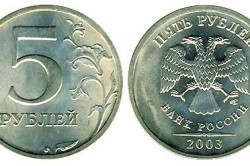
- 2 rubles 2003 - snow-white, made of steel (magnetized), 23 mm across and 5.1 grams in weight, with the image of a two-headed falcon. It can be realized up to 10 000 r. Cost depends on condition.
- 5 rubles 2003 - snow-white, made of steel, a diameter of 20.5 mm, weight 3.25 grams, with a protruding edging and an image of a two-headed falcon. He buys a bank for 6000 r. in normal condition.
- 5 rubles 1999 is a very rare coin, because in 2000 MMD wanted to abandon the minting of 5-ruble coins and in 1999 a limited edition of them was released. The coin is no different from its own brothers in 2003, its only difference is the year of issue. You can rent it for 100,000 p. in normal condition.
Methods for their preparation and implementation
You can buy such coins in different ways: find in a piggy bank, get change for a ride or find it on the street. The main thing is to keep in mind which of them have value and which can be implemented at Sberbank. One of the important criteria for buying collection products is their appearance: the better the product looks, the more expensive it is valued. If you have not accepted your funds at the bank, try to contact special numismatist societies. Some rare products are sold more expensive to personal collectors. The main thing is to be more attentive to the little things and not to give your case a jackpot for traveling on a trolley bus. If you appeal to a bank branch, you should know the prices in advance.
Coins produced by the USSR today are also quite rare and have the highest cost for buying. Successful to you finds and the greatest profit.
Selling coins to Sberbank is a good way to earn money if you have suitable samples on hand. The rules for admission are constantly changing, in 2017 a number of innovations and special conditions should be taken into account. Now Sberbank is buying up only its own investment coins, which were issued in limited quantities from precious metals.
The organization may legally refuse to purchase if scratches and mechanical damage are found on the products. It will still be possible to return a banknote, however, the price may fall in relation to the original, it will depend on the content of precious metals. The cost is formed from the following indicators:
- coin safety;
- availability of documents confirming ownership;
- product uniqueness (number of coins in circulation);
- special series or collection;
- face value and cost of materials used in production.
Sale Features
First you need to find out on the Sberbank website which coins are currently being accepted. Interesting information can be found in the "Promotions" section, maybe at a certain time the cost of the product will be higher. Getting advice and resolving disputes is carried out on a single line with the number 8-800-555-55-50, you will be told the requirements and a list of offices that you can contact.
The process consists of steps:
- Appearance to one of the voiced departments;
- Product evaluation by a specialist;
- Sounding the amount of the transaction;
- With the consent to the proposed conditions, an agreement is signed;
- Receiving money is carried out by transfer to a card or in cash after treatment.
The catalog with photos and prices is located on the official resource, in it you can find almost all the information you are interested in. Here you can see the difference between buying and selling investment coins, an investment will be beneficial only in the long term. You should sell after three years, otherwise you will have to pay a 13% tax, which makes the deal less attractive. Often you have to wait much longer for the difference to justify the investment.
Demand is also present for simple coins, their list is strictly defined, the purchase period rarely exceeds 2 weeks. Sberbank bought coins of a certain year, with the presence of a special edging, with the designation or absence of a mint mark. Actual information can be found only on the site. Buying is far from being done at all offices; not everywhere there are specialists with the proper level of qualification. Before going to the bank, it is better to clarify the possibility of selling by phone.
Read more:
USSD requests (commands) for a mobile bank
Testamentary disposition of a deposit at Sberbank
What loans can I get at Sberbank?
In which stores does “Thank you” from Sberbank operate
Memo of the insured against accidents "Protection of loved ones"
Almost everyone, probably the person in the wallet, has a coin for happiness. One is in the wallet, all the rest are at home. They lie just like that, without any benefit. And, probably, many would like to get rid of them and get some kind of profit.
Most recently, people heard a rumor that Sberbank was buying up a trifle. But it is not so. Small money was bought up by one bank of Russia, but not by Sberbank, and not all the trifle was bought up, but only rare. This bank bought one-, two- and five-ruble coins from the population, which were issued in 2003 in St. Petersburg. For each coin, regardless of what quality it was, they paid five thousand rubles. It was just an action, and it has already ended. But it was she who gave rise to rumors that Russian banks are buying up all the little things. Some people began to scoop up the pennies that were lying around and drag them to nearby offices and bank branches, while others frantically tried to type in the search engine a request: “What coins does Sberbank accept?” and, finding no information, like the first, they all the same fled to the nearest bank.
In this article we will describe which coins Sberbank accepts and dispel all myths.
First of all, I want to note that not a single bank in Russia accepts metal money if the sale value of a coin is higher than the nominal value. That is, for a five-penny coin, not one bank will not give you a large amount.
Now let's talk about which coins Sberbank accepts. This bank itself sets the purchase price. It accepts only memorable and investment: 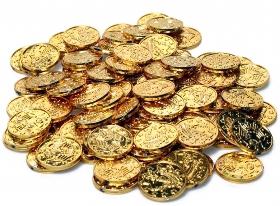 world samples issued by the Bank of Russia, and coins issued by foreign mints, made of precious metal with inserts of semiprecious and precious stones, with color coating, hologram, non-standard shapes.
world samples issued by the Bank of Russia, and coins issued by foreign mints, made of precious metal with inserts of semiprecious and precious stones, with color coating, hologram, non-standard shapes.
Sberbank also buys metal money that has been issued for significant events and dates. For example, these are 25-ruble coins issued for the Sochi Olympics or coins of serial issues: issued for a certain year according to the Chinese calendar, zodiac signs, coins of a love theme, coins issued by February 23, March 8, etc.
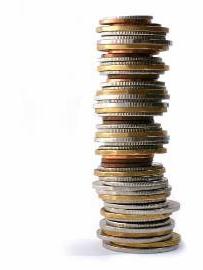 Thus, the numismatic trifle is not accepted all in a row. On the official website of the bank you can see a list of what coins Sberbank buys. But it should be remembered: in order for the bank to pay you money for them, the state of the coin must be of BU quality, that is, it should not have been used, it should have an initial shine, smooth surface, no scratches and flaws. It should not be visible damage and deformation, no prints. If Sberbank sold coins in the original packaging, then he will buy them from you only in the same configuration.
Thus, the numismatic trifle is not accepted all in a row. On the official website of the bank you can see a list of what coins Sberbank buys. But it should be remembered: in order for the bank to pay you money for them, the state of the coin must be of BU quality, that is, it should not have been used, it should have an initial shine, smooth surface, no scratches and flaws. It should not be visible damage and deformation, no prints. If Sberbank sold coins in the original packaging, then he will buy them from you only in the same configuration.
You need to know that the purchase of memorabilia and in the same way as any operations in Sberbank occurs only if there is a document proving your identity.
Now you know what kind of coins Sberbank accepts, and you will not believe in the next rumors spread by ignorant people.
Collecting coins brings a good profit. In this case, not only avid coin collectors, but also ordinary citizens who are lucky enough to find a valuable or rare coin can get money for the sale of coins.
Found a jar of old coins at home and don’t know what to do with them? Try to find rare coins among the heap, because banks are willing to pay for them.
The easiest way will be to contact Sberbank of Russia, which has branches even in small cities.
The very first problem that lies in wait for a person who has decided to sell coins is that purchases have a certain frequency, so you need to follow the news. The search goal of Sberbank is constantly changing: since in January 2001 coins were in demand, then in February, the purchase of 2003 coins was already started.
The reason is simple: as soon as enough coins have been received, the search goals change and completely different ones become in demand. Therefore, it is so important to follow the news from the central office in order to accurately sell your collection to this bank.
Selling and buying coins is carried out in more than 800 different branches throughout the country, each person has a chance to sell collectible or commemorative coins to the bank, having previously known the price from an employee.
This is the easiest and most convenient way to sell the accumulated copies, but get ready for the fact that for them it will turn out to help out not so much. The fact is that the bank carries out bulk purchases, as a result of which the real cost of copies can be somewhat underestimated.
Therefore, if you want to benefit from the transaction, you need to contact the numismatists directly.
This is risky and takes more time, but you can get much more for your collection. And here the doors are always open, in contrast to the periodic purchase of coins by Sberbank.
What kind of coins can I sell?
You will learn what coins Sberbank buys in 2017 from the bank's news, but usually this financial institution most often announces stocks for the purchase of such coins:
- rubles of the 2001 Red Book series, 2 and 10 rubles, as well as 50 kopecks;
- 2 and 10 rubles of the 2003 issue with a portrait of Gagarin without an indication of the mint;
- 1997 rubles from nickel alloy and yellow;
- 1998 rubles with a wide edging;
- 2 rubles in 2003, and the priority when accepting coins in 2003 is given to coins minted at the mint in St. Petersburg;
- 5 kopecks of white steel in 2002.
A catalog with prices and photos is available on the bank's website, where you can clearly see which coins Sberbank buys.
Remember, these are not the only copies that the bank announces the purchase of annually. There are more valuable rare coins, the price of which is 10 thousand rubles and higher. But only the central office rarely buys them from citizens.
Therefore, if you are lucky enough to find a truly unique coin, then it’s better not to wait for an offer from the office, but try to find a buyer yourself who will appreciate the charm.
The list of purchased coins changes every few months, since only a certain amount of the declared face value is needed. If you do not have time for the stated date, then the purchase will no longer be carried out, because a completely different face value is already in demand.
If we talk about collectible coins made of precious metals, then Sberbank always has a demand for them. Therefore, first verify the authenticity of the instance, conduct an assessment with a knowledgeable person, and then go to the bank.
How much can I expect?
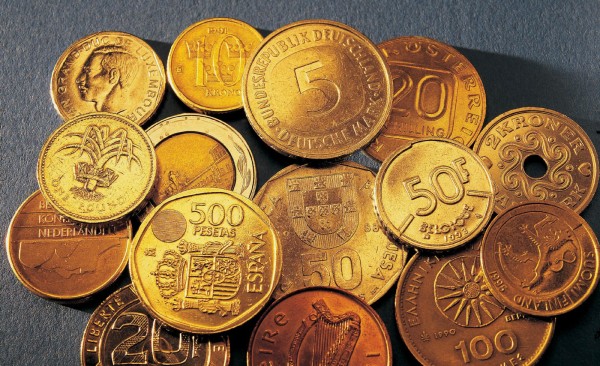
Rare coins of 1997-2010 are bought at a price that is formed on the basis of a number of parameters:
- the mint that issued them;
- year of minting;
- face value.
Of great importance is the perfectly preserved appearance. The prices of coins bought by Sberbank depend on whether there are any defects on them and are approximately equal to:
- 2 rubles of 2003 can cost from 5 to 10 thousand rubles;
- a five-ruble coin is sold for 6 thousand;
- rare coins of 1999 with a face value of 5 rubles are considered the most valuable due to the fact that the circulation was too small. They are ready to buy it from the seller for an amount in excess of 100 thousand rubles;
- anniversary coins of 2001 with a face value of 1 and 2 rubles will cost 30 thousand rubles each.
The average price of coins sold in 2016 is 1-5 thousand rubles, we can say that in 2017 this trend will continue.
The maximum that Sberbank pays for incredibly rare coins is only 30 thousand rubles, as already noted above, the purchase is massive, therefore, the corresponding cost is set.
At different auctions, you can sell several valuable coins at a slightly more expensive price, but first you will need to prove their value and it is much easier to immediately take the piggy bank with you to the nearest Sberbank branch.
It is worth mentioning separately about coins with manufacturing defects and defects: 5 kopecks 2002-2003 without marking the place of minting, non-magnetic 10 and 50 kopecks of 2007 and the anniversary ruble with Gagarin 2001 (without marking the place of minting).
The price for them is determined individually. Please note that coins of 2 and 10 rubles from 1999 to 2010 are not valuable and you can get from them from 20 to 100 rubles at most.
Turning it all away won't work
Many coins are very rare, some are even out of circulation, and therefore are of value. But the lucky man who found them in his piggy bank should not rejoice ahead of time.
Sberbank sets a number of criteria for the appearance of the accepted coins, so failing to return coins with defects:
- only good appearance. If it is satisfactory, the price may be reduced, poorly preserved may not be accepted at all;
- all 2003 coins should be stamped with the mint of St. Petersburg;
- if we are talking about jubilee coins, then they should not have any information about the mint at all.
Therefore, follow the news to find out the dates of accepting coins from Russians.
A Russian bank began to buy small coins from citizens for 5,000 rubles From the site skbbank.ru From January 17 to July 17, 2011, the population of our country can exchange coins in denominations of 1, 2 and 5 rubles for each for 5 thousand rubles.
It is clear that about 15,000 such coins were issued, so this is more likely not a means to enrich the population, buy coins, but just a PR move of the bank - now everyone is talking about it))
But advanced numismatists know the price of every penny.
Let's see how much some coins cost:
2003 year. Until this year's coins pop up, prices are not particularly rising, in excellent condition you can buy:
1 ruble - from 13 500 r to 18 500 r
2 rubles - from 12 000 r to 16 000 r
5 rubles - from 5 000 r to 8 000 r
in a worse condition (VF) 1 ruble and 2 ruble can be purchased at 8 - 10 thousand rubles per unit, and 5 rubles for 4 thousand rubles.
2001 year mmd, not anniversary (without a picture of the CIS and Gagarin) coins of 50 kopecks, 1 ruble, 2 ruble. They are known in 1-2 copies, only the auction can determine the price, but it is clearly more than 100,000 rubles.
Coins without a mint designation are also considered rare:
5 kopecks of 2003 without letters - from 500 rubles
5 kopecks of 2002 without letters - from 2 500 rub
2 rubles in 2001 with Gagarin without letters - from 3,500 rubles
these coins were minted on mmd
Less rare, but infrequently encountered, are considered coins of 50 kopecks, 1 ruble, 2 ruble in 1999:
1 ruble mmd / spmd - XF-5r, UNC-10r
50 kopecks mmd / spmd - below XF-10r, UNC-50r
2 rubles SPMD lower - XF-40r, UNC-100r
2 rubles mmd lower - XF-60r, UNC-150r
1 ruble 1997 mmd with a wide edging. Its cost is 5 - 12 thousand rubles, depending on the condition.
50 kopecks of 2002 M magnetic are known (on a circle from 1 rub 1992?)
as well as 5 rubles in 2002 (found only in sets) on a mug from 2 rubles
1992-1993(95)
Two very rare coins of this type:
20 rubles 1993 lmd
50 rubles 1993 lmd bimetal
their price is more than 50 000 r each, as a rule, such coins are sold at auctions. 50 rubles 1993 lmd bimetal is found only in sets of the State Bank in 1992, 10-20 copies are known.
50 rubles and 100 rubles in 1992 mmd. Their price is not more than 200 rubles
There are also cross-links of bimetallic coins: the front side is 50 rubles, and the reverse side of the coin is 100 rubles and vice versa. Such coins are extremely rare and cost more than 50 000 rub.
In 1992, 10 and 20 rubles were minted on non-magnetic circles, and in 1993 on magnetic. But there are "crossroads":
10 rubles in 1992 mmd magnetic - from 5000r
10 rubles 1993 mmd non-magnetic - from 800r
10 rubles 1993 lmd non-magnetic - from 10 000r
20 rubles 1993 mmd non-magnetic - from 20 000 rub
Such coins are "for everybody."
Known 1 ruble L, M, mmd on a circle of 15 kopecks 1961-91 with a smooth edge
as well as 50 rubles in 1993 LMD from white metal (on a mug for 20 rubles)
1991(1992):
The so-called type "GKChP"
10 rubles (bimetal) 1991 mmd - from 3,500 r
10 rubles (bimetal) 1992 lmd - from 3 000 r
10 rubles of 1991 are also known on a white circle (on a circle of 5 rubles?) As well as 10 kopecks of 1991 made of precious metals, the price of 30 000 rubles each
In 1991, they began to mark the mint on the coins, there were gaps: the coins of 1990, minted with a 1991 mint stamp and the mint, as well as the coins of 1991, minted with an old mint stamp.
10 kopecks 1990 M from 4 000 rub
5 kopecks 1990 m from 3 500 rub
10 kopecks 1991 without letters - from 800r
20 kopecks 1991 without letters - from 12 000 rub
Due to the fact that circles of coins are 10 kopecks and 2 kopecks; 3 kopeks and 20 kopeks; 5 kopecks and 50 kopecks are approximately the same size, there are crossroads. The price of such coins is also quite high.
Rare coins 50r - 250r
1 kopeck 1961-65
2 kopecks 1962-64.66
3 kopecks 1962.65
5 kopecks 1973.74
15 kopecks 1971
50 kopecks 1967.76
1 ruble 1965
Infrequent 250r - 3000r
5 kopecks 1965-69.71.72
10 kopecks 1965-68
15 kopecks 1965-69.71-75
20 kopecks 1965-69.71.72.74.75
50 kopecks 1970,71,75
Very rare:
5 kopecks 1970 from 5 000 r
15 kopecks 1970 from 6 500 r
20 kopecks 1970 from 3 000 r
20 kopecks 1973 from 4 000 r
20 kopecks 1976 from 3 000 r
A separate place is 1958.
Some denominations came into circulation in a small print run.
Price in good condition (VF):
10 kopecks - from 30 000 r
3 kopecks - from 40 000 r
1 kopeck - from 50 000 r
2 kopeks - from 50 000 r
2 rubles - from 100 000 r
5 rubles - from 125 000 r
20 kopecks - from 150 000 r
15 kopecks - from 180 000 r
5 kopecks - from 180 000 r
50 kopecks from 250 000 r
1 ruble from 250 000 r
3 rubles - the rarest coin of 1958, more than 1 million rubles
Three SUPER RARITIES:
10 and 15 kopecks of 1931 silver, known in 1 (?) Copy
20 kopecks of 1934, (also silver) only remodelers are known
three RARITIES:
2 kopecks of 1927 - from 120 000 r
20 kopecks 1931 silver - from 100 000 r
2 kopecks of 1925 - from 75 000 rub
Almost any coin in perfect condition costs several times, or even tens of times more than the price tag!
And now the most common misconceptions
1 ruble of the CIS and 2 rubles with Gagarin in 2001 - the price is indicated on the coin.
10 kopecks in 2001 - the price is indicated on the coin.
50 kopecks 2003 - the price is indicated on the coin.

